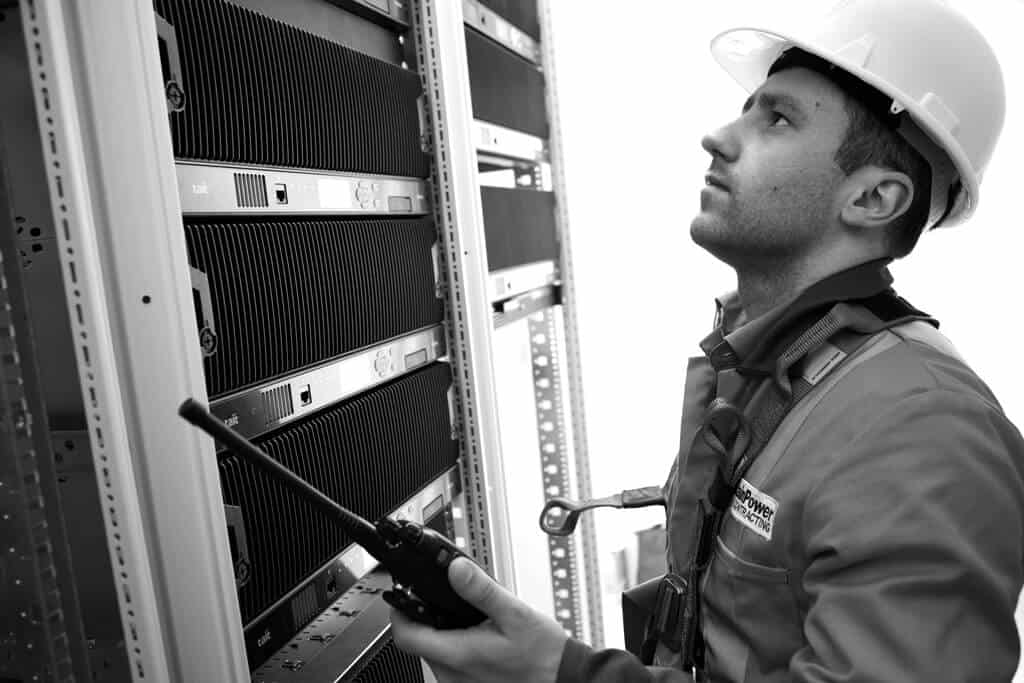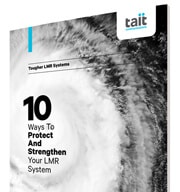 Operators can efficiently track and identify assets and people, then reconfigure or quickly disable units to prevent them falling into the wrong hands.
Operators can efficiently track and identify assets and people, then reconfigure or quickly disable units to prevent them falling into the wrong hands.
Managing assets, fleets and subscribers is the next article taken from the new guide on how to protect and strengthen your LMR system. If you missed the previous chapters you can read those here.
The Tougher LMR Networks guide investigates every aspect of wireless communications, and considers how operators might make their LMR systems more resilient.
You can also download the full guide and read it on the go.
Asset tracking
The risk of theft and deliberate misuse highlights the importance of asset tracking and diligent record-keeping. However, few operators currently maintain up-to-date documentation with detailed information about hardware and software versions, ownership and repairs.
As devices become more interconnected and product life-cycles get shorter, accurate documentation becomes increasingly important.
Keeping track of repairs is essential for identifying chronically-faulty equipment or abusive operators. A spreadsheet may be sufficient, although a specialized and sophisticated asset tracker application can control work in the shop, ownership, maintenance schedules, programming upgrades, inventory checks, installation and structural maintenance.
You can set up asset management reporting, and make departments responsible for their own assets and control access.
Tracking devices and subsystems
Most radio system owners rely on their vendors, which can work well as long as your relationship is good. Standards-based systems with equipment from different vendors may require you to create and maintain a centralized, unified database.

Tracking subscriber equipment
Maintaining user information is important for day-to-day operations and for future planning, so it is easy to justify the cost of asset tracking tools. However, few systems have formal asset tracking processes, which is hard to understand, given that radios are expensive, and those who have implemented asset tracking tools are enthusiastic about their value.
RFID tagging of equipment can help automate asset tracking and has been adopted increasingly to improve the management of all assets and to enhance security.
Of course any system relies on accurate input, and it is common for record keeping to deteriorate over time. For the best results, you should purchase the best tool you can afford, and use it consistently, but even a basic spreadsheet or database is better than nothing at all.
Here are some guidelines to give you solid information when upgrading or replacing your system.
- Delegate responsibility for keeping track of information to one person.
- Use maintenance records to track assets, and to assess equipment reliability for replacement.
- Control access for accountability.
- Outsourcing maintenance services can compromise recording – establish clear, common asset management processes and tools with support partners.
- Workers must report losses immediately, so radios can be disabled.
If your communications are publicly- funded, you may need to track any item worth more than $100. Good processes will mean fewer unpleasant surprises at audit.
Administration
Large LMR systems demand significant active administration, but even smaller systems require meticulous set-up and active management.
Subscriber management
While LMR system configuration changes are relatively infrequent, adding or removing subscribers, changing status or access can be a daily event. Inter-system interoperability means the skills necessary to successfully manage subscribers are growing in complexity and importance.
At the same time, programming is becoming increasingly complex, due to greater functionality and the fact that many systems have radios from multiple vendors.
Subscriber programming is not yet standardized, so although vendors may provide system keys (or advanced system keys) to prevent unauthorized cloning, programming or access, these will vary between vendors.
Becoming proficient in programming different radio models is challenging and time-consuming, so you need to factor in the cost of this, if you choose to have different vendors’ radios on your system.
Modern radio equipment may offer Over The Air Programming (OTAP) as a means of remotely updating radio software and changing a radio’s features by transmitting the updates directly to the radios.
This replaces the process of bringing radios into a workshop where a technician physically installs the updates. If your radio fleet is large, then OTAP can save time and money.
The type of updates that can be transmitted over the air range from basic services, such as changing channel plans and talkgroups, to more advanced services, such as altering individual user profiles or modifying applications on the radio.
Dispatchers and consoles
Regardless of your maintenance arrangements or the industry you operate in, at the heart of your day-to- day communications are your dispatch consoles. This is the major function for any system operator – directing traffic, allocating tasks, identifying technical or safety issues.
Your dispatchers are the eyes and ears of your system. They may identify problems with the system itself, or at the user end – unhappy users are quick to let them know there is a problem.
Development of digital CSSI (Console Sub System Interfaces) standards has helped to define console interconnection to the system. Time spent learning about your console options will result in better, future-proof decisions.
Visit the Tait website for more information about asset management services.
 This article is taken from the 10 part guide to Tougher LMR Systems.
This article is taken from the 10 part guide to Tougher LMR Systems.
If you would like to download this article and the other articles in the series you can do that on the Tait website.



